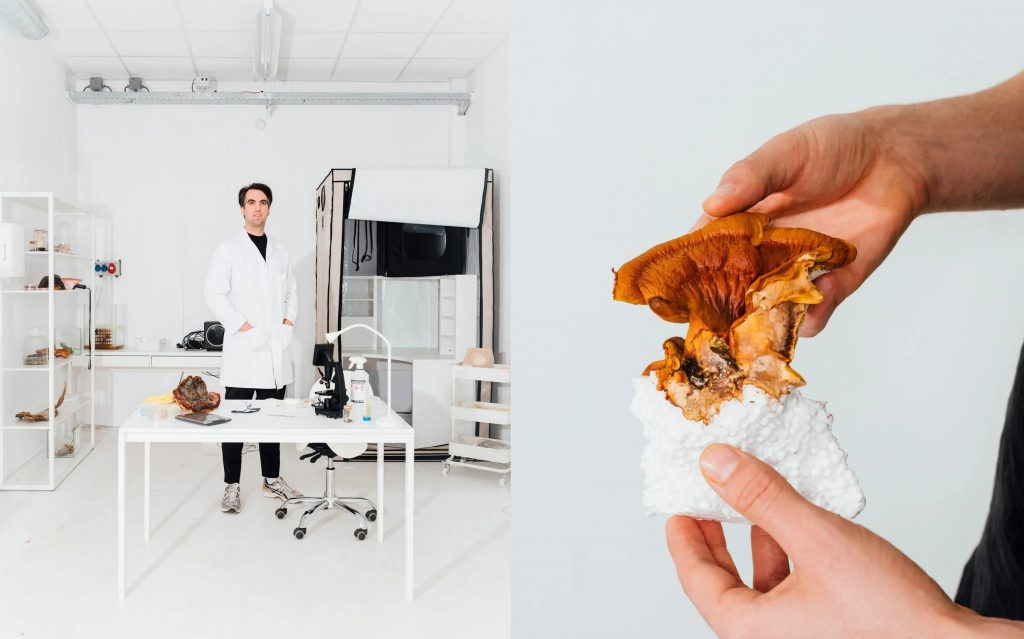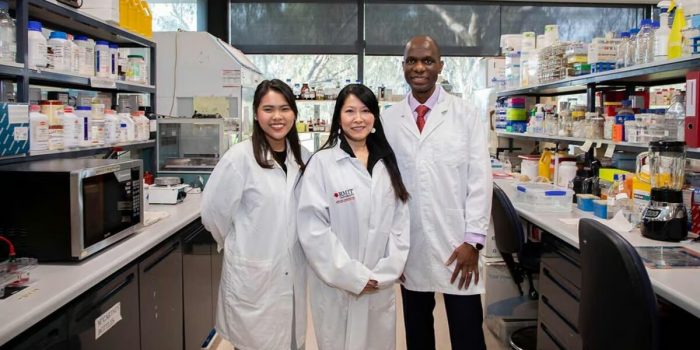Scientists often compare fungi to icebergs because what you see above the surface is only a small part of what exists below. When you dig beneath a mushroom, you’ll discover a vast network called mycelium. Mycelium is like a nutrient and communication system that plays a vital role in supporting ecosystems.
Because of its intricate network of branching filaments called hyphae, researchers are fascinated by mycelium and its potential for use in construction. A team from RMIT University in Australia has manipulated the composition of mycelium through chemical means to create a new material that is sustainable, scalable, and fire-retardant. This material can be used as insulation for buildings and more.
“Fungi are usually found in a composite form mixed with residual feed material, but we found a way to grow pure mycelium sheets that can be layered and engineered into different uses – from flat panels for the building industry to a leather-like material for the fashion industry,” said Tien Huynh, an expert in biotechnology and mycology, and an associate professor in the School of Science at RMIT.

Building upon their previous research on the fire-retardant properties of mycelium, which was published in Polymer Degradation and Stability and Nature’s Scientific Reports, the researchers have developed a material that can be applied in layers over flammable surfaces.
They have also bioengineered the fungi to ensure uniformity throughout the material and to keep it very thin, almost like paper.
When exposed to fire or high heat, the outer layer of mycelium decomposes and forms a protective char, which safeguards the underlying layers. This char acts as a non-toxic and effective buffer, making it a promising fire-resistant material for building insulation.
“The great thing about mycelium is that it forms a thermal protective char layer when exposed to fire or radiant heat,” said Everson Kandare, associate professor at RMIT and an expert in the flammability and thermal properties of biomaterials. “The longer and the higher temperature at which mycelium char survives, the better its use as a fireproof material.”
The material is environmentally friendly, safe for humans, and has the potential to be produced from renewable organic waste. Additionally, unlike many conventional panels, it does not contain plastic, so it does not release toxic fumes when exposed to flames.

“Bromide, iodide, phosphorus and nitrogen-containing fire retardants are effective, but have adverse health and environmental effects,” said Kandare. “They pose health and environmental concerns, as carcinogens and neurotoxins that can escape and persist in the environment cause harm to plant and animal life.
“Bioderived mycelium produces naturally occurring water and carbon dioxide,” she added.
“We’ve been approached by the mushroom industry about using their fungal-incorporated waste products,” said Huynh. “Collaborating with the mushroom industry would remove the need for new farms while producing products that meet fire safety needs in a sustainable way.”
Although fungi grow slowly, which makes scalability a challenge compared to plastic production, it also presents an opportunity. The research team is currently studying bioengineered fungal mats that can reduce the intensity of flames and enhance fire safety in buildings.


